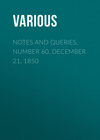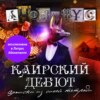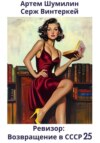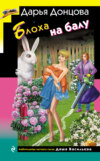Buch lesen: «Notes and Queries, Number 60, December 21, 1850», Seite 3
Minor Queries
Rab. Surdam, Meaning of.—The eccentric but clever and learned William Nicol, one of the masters of the High School of Edinburgh, and noted as the friend of Burns, was the son of a poor man, a tailor, in the village of Ecclefechan, in Dumfriesshire. He erected, over the grave of his parents, in Hoddam churchyard, a throuch stone, or altar-formed tomb, bearing the words
"RAB. SURDAM."
Query the meaning of these mystical characters?
Edinensis.
Abbot Richard of Strata Florida.—Can you or any of your antiquarian readers solve me the following. It is stated in vol. i. p. 100. of Lewis Dwnn's Heraldic Visitation into Wales, &c., art. "Williames of Ystradffin in the county of Caermarthen":—
"William ab Thomas Goch, Esq., married Joan, daughter and sole heiress to Richard the Abbot of Strata Florida, county of Cardigan (temp. Henry VII.), son of David ab Howel of Gwydyr, North Wales."
From this I naturally expected to find some connecting link between the Abbot and the ancient family of Wynn of Gwydyr, derived from Rhodri Lord of Anglesey. In their lineage, however, the name of David ab Howel does not occur; but about the aforesaid period one of their progenitors named Meredith ab Sevan, it is stated, purchased Gwydyr from a David ab Howel Coytmore, derived through the Lord of Penymachno from Prince David, Lord of Denbigh, the ill-fated brother of Llewelyn, last sovereign prince of North Wales. Is it not therefore likely that the said Abbot Richard was son to the above David ab Howel (Coytmore), the ancient proprietor of Gwydyr; that his surname was Coytmore; and the arms he bore were those of his ancestor David Goch, Lord of Penymachno, viz., Sa. a lion ramp., ar. within a bordure engr. or.
W.G.S.J.
Cardinal Chalmers.—Can any of your readers give me some information about a Cardinal Chalmers,—whether there ever was a cardinal of the name, and where I could find some account of him? I have the boards of an old book on which are stamped in gilding the Chalmers arms, with a cardinal's hat and tassels over them. If I remember correctly, the arms are those of the family of Chalmers, of Balnacraig, in Aberdeenshire.
I have some reason to believe that the boards were purchased at the sale of the author of Caledonia.
S.P.
Armorial Bearings (Vol. ii., p. 424.).—My note of the coat-armour in question stands thus: "Three bars between ten bells, four, three, two, and one." And I have before now searched in vain for its appropriation. I am consequently obliged to content myself with the supposition that it is a corruption, as it may easily be, of the coat of Keynes, viz. "vair, three bars gules," the name of the wife of John Speke, the great-great-grandfather of Sir John Speke, the founder of the chapel; and this is the more probable as the arms of Somaster, the name of his grandfather's wife, appear also in the roof of the same chapel.
J.D.S.
[J.D.S. is right in his blazon; and we had been requested by J.W.H. to amend his Query respecting this coat.—ED.]
"Fiat Justitia"—Who is the author of the apothegm—
"Fiat justitia, ruat cœlum?"
J.E.B. MAYOR.
Painting by C. Bega.—
"Wÿ singen vast wat nieus, en hebben noch een buÿt,
Een kraekling, is ons winst, maet tliedtkenmoet eerst wt."
I have a small oil painting on oak panel which bears the above inscription. The subject of the painting is a boy, who holds in his hands a song, which he appears to be committing to memory, whilst another boy is looking at the song over his shoulder. "C. Bega" is written on the back of the picture-frame, that evidently being the artist's name. I shall feel obliged by your translating the above two lines for me, and also for information as to "C. Bega."
W.E. Howlett.
Kirton.
Darcy Lever Church.—On the line of railway from Normanton to Bolton there is a small station called Darcy Lever.
The church there struck me, on a casual view, as one of the most beautiful examples of ecclesiastical architecture which I have ever seen, and I should therefore like very much to know the date of the structure, and, if possible, the architect.
The singularity which attracts attention is the delicate tracery of the spire, which I should wish to see largely imitated.
E.
R. Ferrer.—I have a drawing, supposed to be of Sir W. Raleigh by himself when in the Tower: it came from Daniel's History of Henry VII., and below it was written,
"R. Ferrer,
Nec Prece nec Pretio."
Could the "Notes and Queries" ask if anything is known of this R.F.?
H.W.D.
Writers on the Inquisition.—In the English edition of Voltaire's Philosophical Dictionary, article "Inquisition," I find, among other authors on that subject who are quoted, Hiescas Salazar, Mendoça (sic: Query, Salasar y Mendoça?), Fernandez, Placentinus, Marsilius, Grillandus, and Locatus. Can any of your bibliographical friends give me any information as to these authors or their works? Let me at the same time ask information respecting Bordoni, the author of Sacrum Tribunal Indicum in causis sanctæ fidei contra Hereticos, &c., Rome, 1648.
Iota.
Buckden (Vol. ii., p. 446.).—Will M.C.R. explain his allusion to "the abbot's house" at Buckden. I am not aware of Buckden having been the seat of a monastic establishment. Perhaps what he calls "the abbot's house" is part of the palace of the bishops of Lincoln.
C.H. Cooper.
Cambridge, December 2. 1850.
True Blue.—Query the origin of the term "True Blue." After the lapse of a few years it seems to have been applied indifferently to Presbyterians and Cavaliers. An amusing series of passages might be perhaps gathered exemplifying its use even to the present time. The colour and "cry" True Blue are now almost monopolised by the Tory party, although there are exceptions—Westmoreland and Yorkshire, for instance.
Viator.
Passage in Hamlet.—In Mr. C. Knight's "Library," "Pictorial," and "Cabinet" editions of Shakspeare, the following novel reading is given without note or comment to say why the universally received text has been altered. It occurs in Hamlet, Act I. Sc. 7.
Ham. "Staid it long?
Hor. "While one with modern haste might tell a hundred."
As Mr. Knight is now publishing a "National" edition of Shakspeare, perhaps you will allow me through your pages to ask for his authority for this change of "moderate" to "modern," in order that his new reading may either be justified or abandoned.
J.J.M.
Inventor of a secret Cypher.—I think that there was in the fifteenth century a Frenchman so profound a calculator that he discovered for the King of France a secret cypher, used by the court of Spain. I saw a notice of him in Collier's great Dictionary, but have forgotten him, and should like to renew my acquaintance.
Tyro-Etymologicus.
Fossil Elk of Ireland.—Can any of your learned readers give me information on the fossil elk of Ireland—Cervus Megaceros, Cervus Giganteus of Goldsmith? It is stated to be found in various countries, as France, Germany, and Italy, besides England and Ireland. In the Royal Dublin Society museum there is, I am told, a rib of this animal which has the appearance of having been wounded by some sharp instrument, which remained long fixed in the bone, but not so deeply as to affect the creature's life. It seemed to be such a wound as the head of an arrow would produce.
It has been by some thought to be the "Sech" of Celtic tradition. I have learned that the last specimen was shot so lately as 1533, and that a figure of the animal, mistaken for the common elk, is, engraved in the November Chronicle. Now I should feel exceedingly obliged if any information could be rendered me on the matters stated above, as I am most anxious to collect all possible information regarding this most noble species of the Dama tribe.
W.R.C. (a Subscriber).
Exeter, Nov. 1850.
Red Sindon (Vol. ii., p. 393.).—Will Mr. Planché be so good as to say what the red sindon of the chamber of Philippa was?
B.W.
Lights on the Altar.—1. What evidence is there that in the British or Saxon churches lights were burned on the altar at the time of the eucharist?
2. Are there any Canons of these churches, sanctioning the practice?
3. What evidence is there of any other service or solemnity, where lights were burned in the day-time in these churches.
D. Sholbus.
Beloe, Child's Book by.—In the Sexagenarian, by Beloe, is the following passage:
"In four mornings he (Rev. W. Beloe) wrote a book which he intended as an amusement for his children. Some friends recommended him to print it, and though many years have elapsed since it was written, it still continues so great a favourite with younger readers, that an edition is every year published."
Can any of your readers inform me the name of the book here alluded to; and who was the publisher?
F.B. Relton
Replies
MERCENARY PREACHER
In reply to a Query as to the meaning of this epithet in an obituary notice, quoted, in Vol. i, p. 384., your correspondent Arun suggests, in the same volume, p. 489., that it was most likely "used in its primary signification, and in the sense in which we still apply it to troops in the pay of a state, foreign to their own." I cannot help thinking, that by the designation mercenary was implied something more disreputable than that merely of "one who, having no settled cure, was at liberty to be 'hired;'" and in this I am borne out by Chaucer, no mean authority, who, in his well-known picture of the parson, in the Prologue to the Canterbury Tales, amongst the various items of piety and virtuousness with which, in that inimitable piece of character-painting, he credits the "pore persoun of a toun," distinctly states (I quote Mr. Wright's Percy Society edition),—
"He was a Schepperde and no mercenarie."
Now this emphatic disclaimer shows clearly enough that when Chaucer wrote, to be a mercenary preacher was not, in reputation at least, a desirable position; and whether some two centuries and a half later, the appellation became less objectionable, is a question not unworthy of elucidation. No lengthened transcript is needed from so popular a description; its whole spirit is directed not only against hirelings, but also against non-residents:—
"He sette not his benefice to huyre,
And lefte his scheep encombred in the myre;
But dwelte at hoom and kepte wel his folde."
Neither hireling nor non-resident found favour in Chaucer's eyes. They could have very little in common with one whom he says:—
"But Criste's lore, and his apostles twelve,
He taught, but first he folwed it himselve."
The date of the obituary quoted, 1646, lends, too some force to the supposition that "old Mr. Lewis" was, vulgarly speaking, "no better than he ought to be." Milton not many years afterwards published his memorable philippic On the likeliest Means to remove Hirelings out of the Church; and after all allowance is made for the sternness of the Puritan poet's theology, there would still remain enough to show that his fiercely eloquent tract might well have been called forth by the presence in the church of an overweening army of "Mercenary Preachers." Further space, however, need not now be trenched on; but should any new facts be adduced by some of your correspondents illustrative of the curious entry referred to, I am sure they will be welcomed by all your readers, and by none more than by yours, obediently,
Henry Campkin.
Reform Club, Dec. 2. 1850.










